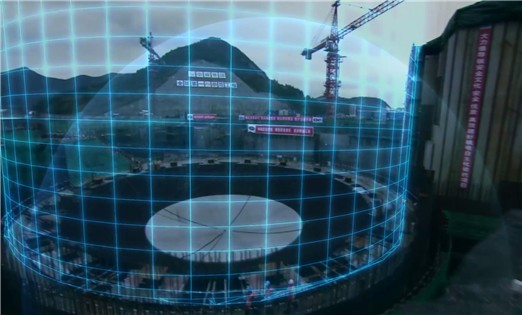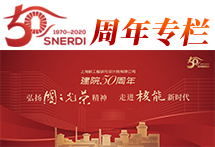Getting SMRs on the map
With the potential for future deployment of small modular reactors (SMRs) to newcomer countries in the developing world, Anthony Wetherall outlines a proposed approach to legislative and regulatory frameworks that could speed up construction.
Advanced small modular reactors (SMRs), comprising both evolutionary and innovative reactor technologies, continue to generate interest worldwide. According to the International Atomic Energy Agency (IAEA), globally there are approximately 45 SMR concepts, including water-cooled reactors, high temperature gas cooled reactors, as well as liquid metal cooled reactors with fast neutron spectrum.
These SMRs are at different stages of design and development for applications such as electricity generation, desalination and district heating. They present novel design, construction and operational concepts; being designed with modular technology, pursuing economies of serial production, factory fabrication and short construction times, with some being pre-fuelled (i.e., the fuel is added in the vendor country’s factory before being sealed and delivered to a customer). Some that have been built for local deployment are expected to begin commercial operation in Argentina, China and Russia between 2018 and 2020.
Of concern is how a future deployment of SMRs to newcomer countries in the developing world might best be facilitated. This paper focuses on how to address one of the major challenges facing these countries in nuclear development: that of developing, implementing and maintaining an adequate national legal and regulatory framework, including a competent national nuclear regulatory body.
SMR Deployment
Realistically, the IAEA expects the first commercial fleet of SMRs to start up sometime around 2025 to 2030, with large fleet deployment only taking place beyond 2030. This may or may not involve deployment to developing countries. In any case, for such SMR deployment to materialise, a number of issues and challenges need overcoming, not least their economic competitiveness which needs to be weighed against alternatives and be pursued through economies of scale (i.e. ‘Nth-of-a-kind’ (NOAK) plants).
The potential future deployment of SMRs to emerging countries may involve early partnering between the vendor and emerging countries within the framework of an intergovernmental agreement. Subject to significant financial and economic considerations, it could also follow a so-called ‘maximum outsourcing and minimum risk’ scenario further to a build-own-operate model[1], including a competent operator and long-term off-take agreement (a power purchase agreement (PPA). Turkey’s Akkuyu nuclear plant is the first unit being built using this model. Deployment may also include lifetime nuclear fuel supply, return of the reactor at the end of life and spent fuel and high-level waste return. Depending on the design, it will likely involve multiple transports between the newcomer and vendor countries for servicing and maintenance, including spent fuel removal.
These factory-built SMRs aim to reduce lengthy construction times – from 5 to 8 years for a traditional large nuclear plant to approximately three years. SMR deployment may follow aggressive schedules with short lead times (particularly due to serial manufacturing of modules).
Developing Countries
Small and medium-sized reactors have long been sought by developing countries, due to many having smaller electricity grids, remote or off-grid regions, less-developed infrastructure and limited investment capabilities. Unfortunately, developing countries are also often vulnerable to political, regulatory and other risks and challenges, typically lacking the experience, skilled workforce and institutional framework with adequate financial and administrative power, accountability and transparency needed for the management of a complex and sophisticated industrial undertaking. They therefore are likely not to be the highest of priority for an SMR vendor.
Yet, advanced SMRs, which only require moderate financial commitment for countries with such grids, represent a more attractive option than traditional large NPPs. Together with some thinking outside the box, the long-held promise of nuclear technology, that is, to play a significant role in providing long-term energy security as a source of clean, reliable and affordable energy that meets growing energy demands for development and provides a basis for sustainable economic growth and improved human well-being, can be achieved.
Development of National Frameworks
The economies of serial production mean that the industry in a vendor country must have some certainty over target countries. Yet, building the national infrastructure for nuclear power is a very complex endeavour, even more so for many developing countries. According to the IAEA, the process usually takes 10 to 15 years of careful multi-disciplinary planning and implementation. While some of the infrastructural requirements may be considered as being less demanding for an SMR than for a large plant, it is clear that much will still need to be done with regards to developing national frameworks in readiness for nuclear power, particularly in the case of many developing countries.
In fact, a number of the current emerging countries share common needs, limitations, issues and challenges when it comes to developing the capabilities needed for acquiring nuclear technology. For example, they need to have an agreed national position that nuclear technology is necessary, establish a national policy and strategy for safety, and overcome the financial and economic challenges. At the same time, many of these countries have some common expectations and needs, such as a proven reactor design licensed in the vendor country (i.e., no ‘first-of-a-kind’ (FOAK) plants), support for financing, and assistance of the vendor country’s regulatory body in licensing.
A major hurdle is first establishing, and then implementing, a national nuclear legislative and regulatory framework within which responsibilities are clearly allocated and that incorporates the relevant international nuclear legal instruments (such as the Convention on Nuclear Safety, IAEA Safety Standards and IAEA Nuclear Security Guidance), as well as international best practice.
In this regard, a key challenge is establishing (and maintaining) an independent and competent national nuclear regulatory body with legal authority and adequate resources to fulfil its statutory obligations[5].
The development of technical competence of the regulatory body is a necessary condition for the safe development of nuclear technology. The IAEA’s competence model is based on a quadrant structure of competences: legal, regulatory and organisational basics; technical disciplines; regulatory practices; and personal and behavioural competencies. To be effectively independent from undue influences on its decision making, the regulatory body needs, among others, to have sufficient competent staff. The four core functions of the regulatory body are: authorization (including licensing, certification, registration etc); review and assessment; inspection and enforcement; and development of regulations and guides. The objective of the four core regulatory functions is the verification and assessment of safety in compliance with regulatory requirements.




